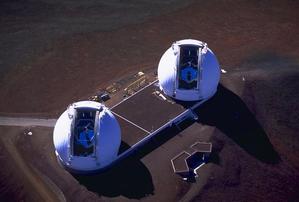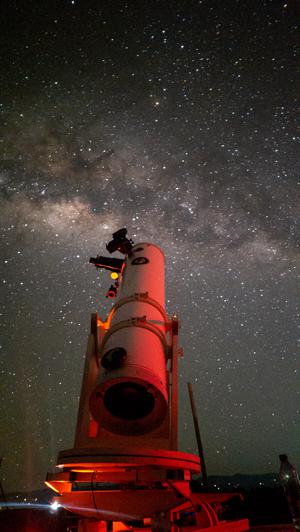Glossary term: Télescope à réflexion
Description: Dans un télescope à réflexion ou un télescope à miroir, l'élément optique principal est un miroir, le "miroir primaire", qui recueille la lumière incidente. Les télescopes à miroir sont souvent caractérisés par le diamètre du miroir primaire, qui va de 10 centimètres pour les petits télescopes d'amateur à huit mètres pour les plus grands miroirs solides utilisés dans les télescopes professionnels. Des surfaces collectrices encore plus grandes peuvent être obtenues en combinant plusieurs segments de miroirs, qui agissent alors de manière similaire à celle d'un miroir solide plus grand. Il existe plusieurs types de télescopes à miroir. Par exemple, dans un télescope de Newton, la lumière provenant du miroir primaire est réfléchie latéralement par un miroir plat plus petit vers un oculaire ou une caméra. Dans un télescope de Cassegrain, un miroir secondaire convexe plus petit réfléchit la lumière à travers une ouverture dans le miroir principal.
Related Terms:
See this term in other languages
Term and definition status: The original definition of this term in English have been approved by a research astronomer and a teacher The translation of this term and its definition is still awaiting approval
The OAE Multilingual Glossary is a project of the IAU Office of Astronomy for Education (OAE) in collaboration with the IAU Office of Astronomy Outreach (OAO). The terms and definitions were chosen, written and reviewed by a collective effort from the OAE, the OAE Centers and Nodes, the OAE National Astronomy Education Coordinators (NAECs) and other volunteers. You can find a full list of credits here. All glossary terms and their definitions are released under a Creative Commons CC BY-4.0 license and should be credited to "IAU OAE".
Related Media
Télescopes Keck
Credit: NASA/JPL credit link
License: PD Public Domain icons
Learning Nights
Credit: Juan Pablo Botero Londoño/IAU OAE (CC BY 4.0)
License: CC-BY-4.0 Creative Commons Attribution 4.0 International (CC BY 4.0) icons










